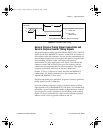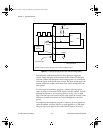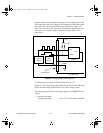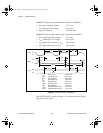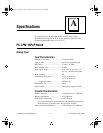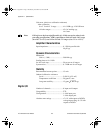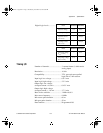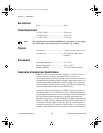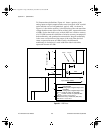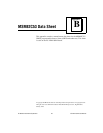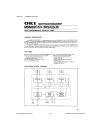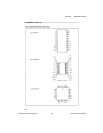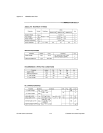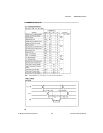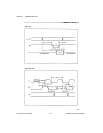
Appendix A Specifications
National Instruments Corporation A-5 PC-LPM-16/PnP User Manual
sum
of quantization uncertainty and A/D conversion error does not
exceed a given amount.
Integral nonlinearity
in a ADC is an often ill-defined specification that
is supposed to indicate a converter’s overall A/D transfer linearity. The
manufacturers of the ADC chips used by National Instruments specify
their integral nonlinearity by stating that the analog center of any code
will not deviate from a straight line by more than
±
1 LSB. This
specification is misleading because although a particularly wide code’s
center may be found within
±
1 LSB of the ideal, one of its edges may
be well beyond
±
1 LSB; thus, the ADC would have a relative accuracy
of that amount. National Instruments tests its boards to ensure that they
meet all three linearity specifications defined in this appendix;
specifications for integral nonlinearity are included primarily to
maintain compatibility with a convention of specifications used by
other board manufacturers. Relative accuracy, however, is much more
useful.
Differential nonlinearity
is a measure of deviation of code widths from
their theoretical value of 1 LSB. The width of a given code is the size
of the range of analog values that can be input to produce that code,
ideally 1 LSB. A specification of
±
1 LSB differential nonlinearity
ensures that no code has a width of 0 LSBs (that is, no missing codes)
and that no code width exceeds 2 LSBs.
System noise
is the amount of noise seen by the ADC when there is no
signal present at the input of the board. The amount of noise that is
reported directly (without any analysis) by the ADC is not necessarily
the amount of real noise present in the system, unless the noise is
≥
0.5 LSB rms. Noise that is less than this magnitude produces varying
amounts of flicker, and the amount of flicker seen is a function of how
near the real mean of the noise is to a code transition. If the mean is near
or at a transition between codes, the ADC flickers evenly between the
two codes, and the noise is seen as very nearly 0.5 LSB. If the mean is
near the center of a code and the noise is relatively small, very little or
no flicker is seen, and the noise is reported by the ADC as nearly 0 LSB.
From the relationship between the mean of the noise and the measured
rms magnitude of the noise, the character of the noise can be
determined. National Instruments has determined that the character of
the noise in the PC-LPM-16PnP is fairly Gaussian, so the noise
specifications given are the amounts of pure Gaussian noise required to
produce our readings.
a.Book : I.Appendix A Page 5 Wednesday, November 20, 1996 6:36 PM



